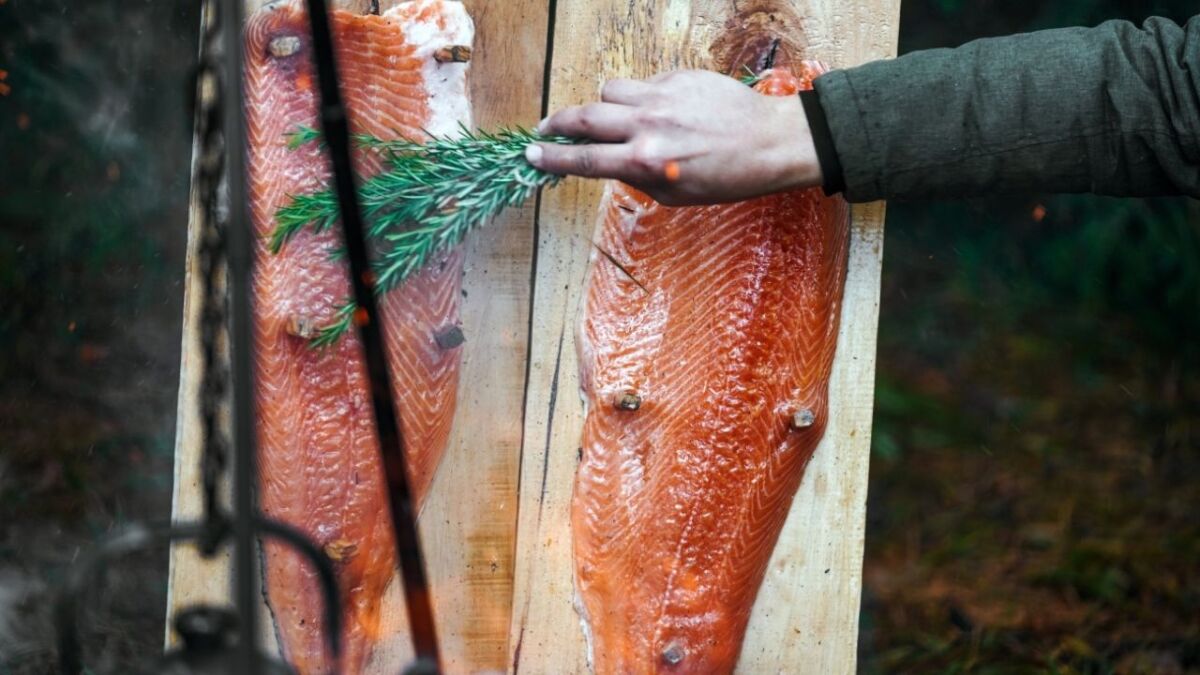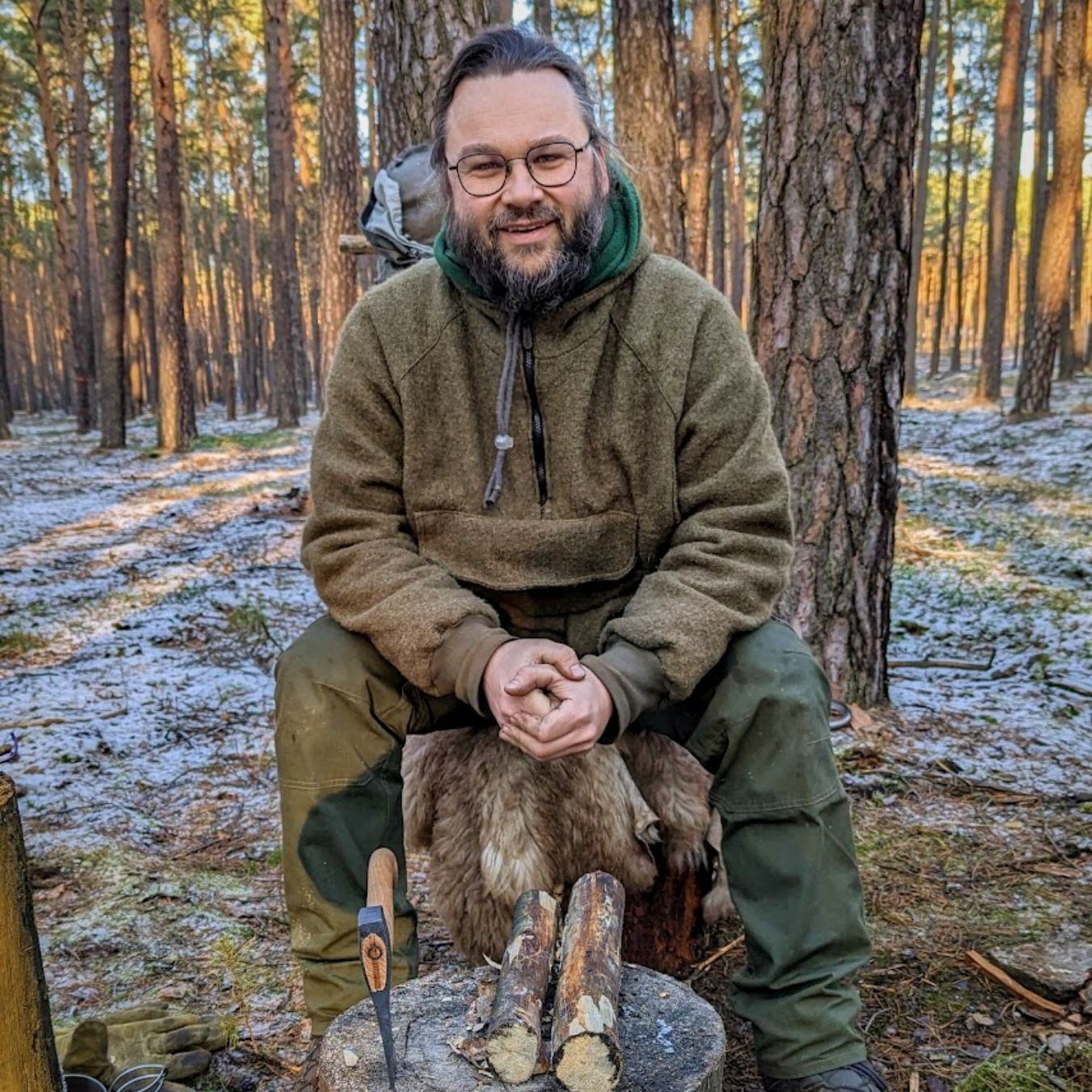
cold smoking
Nomen
Meaning
Cold smoking is a technique used in the outdoor world, particularly in the realm of survival, bushcraft, and camping. It involves smoking food at low temperatures, typically below 85°F (29°C), to preserve and flavor it without cooking it. This method is commonly used to smoke fish, meat, and cheese, providing a delicious and long-lasting food source in the wild. Cold smoking is a valuable skill for outdoor enthusiasts as it allows them to extend the shelf life of perishable foods and add variety to their meals. It is an essential technique to master for those who enjoy self-sufficiency and living off the land.

Examples
„I love experimenting with different techniques in the wilderness, and one of my favorites is cold smoking.“
„Cold smoking is a method of preserving food by exposing it to smoke at low temperatures, typically below 85°F (29°C).“
„When I go on long camping trips, I always bring my cold smoking setup to add flavor to my meals.“
„My friends were amazed when I served them cold smoked salmon during our last camping trip.“
„Cold smoking requires patience and attention to detail, as the temperature needs to be carefully controlled to avoid cooking the food.“
„If you're interested in trying cold smoking, make sure to research the proper techniques and safety precautions beforehand.“
Origin
The term "cold smoking" originates from the practice of preserving food by exposing it to smoke at low temperatures. It has its roots in ancient food preservation techniques used by various cultures around the world.
Cold smoking is believed to have originated in Northern Europe, where the cold climate made it difficult to preserve food for long periods. By exposing food to smoke at temperatures below 85°F (30°C), harmful bacteria and insects were deterred, and the food could be stored for extended periods without spoiling.
Over time, the technique of cold smoking evolved and spread to other regions, including North America. Native American tribes, such as the Inuit and the Native Americans of the Pacific Northwest, used cold smoking to preserve fish and meat.
In modern times, cold smoking has become popular not only as a preservation method but also as a way to add flavor to food. It is commonly used for smoking fish, cheese, and various types of meat, such as bacon and ham.
Today, cold smoking is practiced by outdoor enthusiasts, chefs, and food artisans who appreciate the unique flavors and textures it imparts to food. It has also gained popularity among those interested in bushcraft and survival skills, as it allows for the preservation of perishable food items in the wild.
Synonyms
Cold curing, Cold smoking, Cold preserving, Cold air smoking, Cold smoking process, Cold smoking technique, Cold smoking method, Cold smoking food
Antonyms
Hot smoking, Warm smoking, Hot curing, Warm curing, Hot drying, Warm drying, Hot roasting, Warm roasting
Relatives
Smoked fish, Curing, Smoking techniques, Food preservation, Smokehouse, Smoking process, Flavor infusion, Traditional methods
Historical and cultural importance
Cold smoking has a long history and cultural significance, especially in the realm of food preservation and flavor enhancement. Dating back to ancient times, cold smoking was used as a method to extend the shelf life of perishable foods, such as fish and meat, by exposing them to smoke and low temperatures.
In many cultures, cold smoking was a vital technique for preserving food during long winters or for long journeys. It allowed people to store and transport food without the need for refrigeration. The process of cold smoking involves exposing the food to smoke generated by smoldering wood chips or sawdust, while keeping the temperature below 90°F (32°C).
Cold smoking not only preserved the food but also imparted a distinct smoky flavor that was highly valued. This flavor profile became an integral part of various traditional dishes and culinary traditions around the world. For example, in Scandinavia, cold-smoked salmon is a delicacy that has been enjoyed for centuries.
Today, cold smoking is still widely practiced, not only for preservation purposes but also for culinary exploration. Chefs and food enthusiasts use cold smoking to add a unique smoky flavor to a wide range of ingredients, including cheese, vegetables, and even cocktails.
Understanding the historical and cultural relevance of cold smoking helps us appreciate its role in food preservation and the development of diverse culinary traditions. It also allows us to explore and experiment with this ancient technique in our modern kitchens, adding depth and complexity to our culinary creations.
More information about the term cold smoking
What is Cold Smoking?
Cold smoking is a traditional method of preserving and flavoring food that involves exposing it to smoke at low temperatures. Unlike hot smoking, which cooks the food as it smokes, cold smoking is done at temperatures below 90°F (32°C). This allows the smoke to infuse the food with its distinct flavors without actually cooking it.
The Process of Cold Smoking
To cold smoke food, you need a smoke generator, a smoking chamber, and a way to control the temperature. The smoke generator produces the smoke, which is then directed into the smoking chamber where the food is placed. The temperature is carefully regulated to ensure that it stays within the desired range.
During the cold smoking process, the food is exposed to the smoke for an extended period of time, often ranging from several hours to several days. This slow and gentle smoking allows the flavors to penetrate the food gradually, resulting in a rich and smoky taste.
Benefits of Cold Smoking
Cold smoking offers several benefits, making it a popular technique among survivalists and outdoor enthusiasts:
1. Preservation: Cold smoking helps to preserve food by inhibiting the growth of bacteria and other microorganisms. The smoke acts as a natural preservative, extending the shelf life of the food.
2. Flavor Enhancement: The smoke adds a unique and delicious flavor to the food. It enhances the natural taste of the ingredients and can be used to create a variety of smoky flavors, depending on the type of wood used for smoking.
3. Versatility: Cold smoking can be used on a wide range of foods, including meat, fish, cheese, and even vegetables. It allows you to experiment with different flavors and create your own signature smoked dishes.
Tips for Cold Smoking
If you're interested in trying cold smoking, here are a few tips to keep in mind:
1. Use the Right Wood: Different types of wood produce different flavors. Experiment with different woods, such as hickory, apple, or mesquite, to find the flavors you enjoy the most.
2. Patience is Key: Cold smoking is a slow process that requires patience. Allow enough time for the smoke to fully penetrate the food and develop its flavors.
3. Safety First: It's important to ensure that the smoking chamber is well-ventilated to prevent the buildup of harmful gases. Additionally, always follow proper food safety guidelines to avoid the risk of foodborne illnesses.
4. Practice and Experiment: Cold smoking is an art that takes practice to perfect. Don't be afraid to experiment with different techniques and flavors to find what works best for you.
With its ability to preserve and flavor food, cold smoking is a valuable skill for any survivalist or outdoor enthusiast. Whether you're looking to add a smoky twist to your favorite dishes or preserve food for long-term storage, cold smoking is a technique worth exploring.
Back to overview

